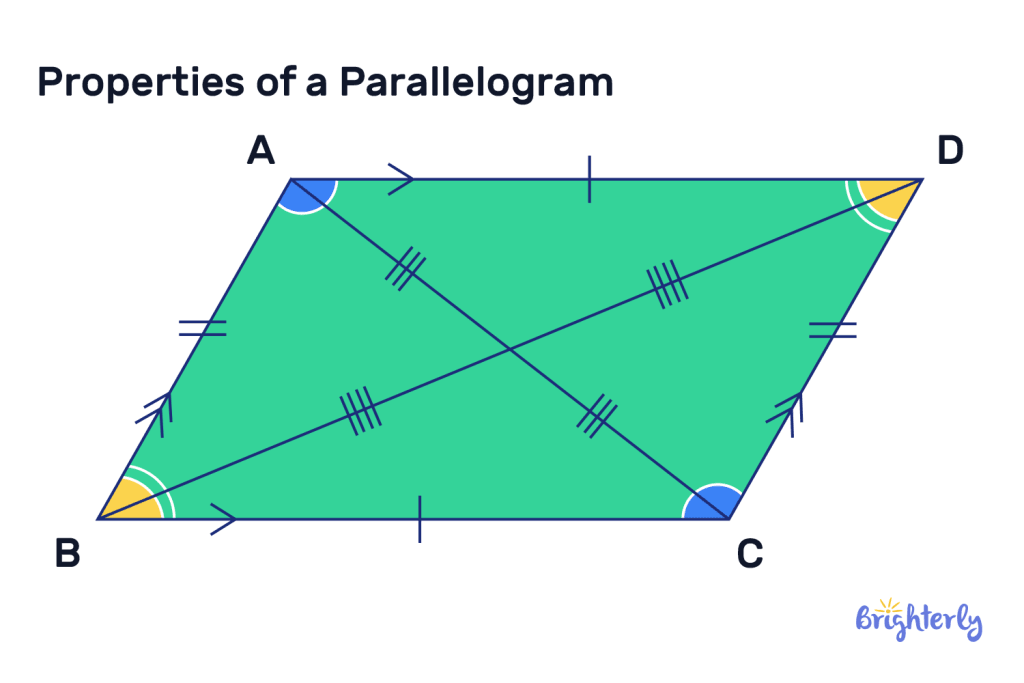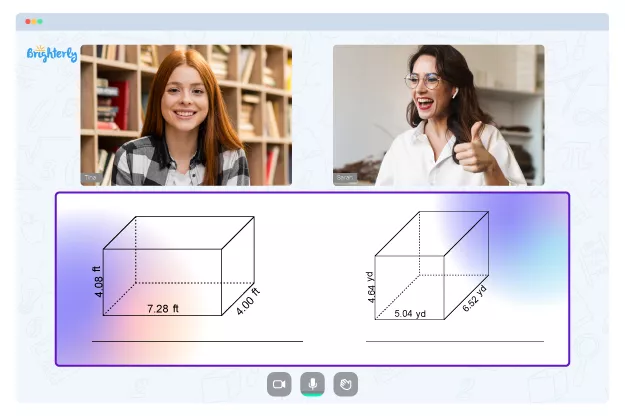Parallelogram – Definition with Examples
reviewed by Jo-ann Caballes
Updated on October 2, 2024
Brighterly is here to make math concepts easy for kids to understand and apply.
As part of our knowledge base series on shapes, we’re exploring parallelograms.
There are unique properties of a parallelogram that are exciting to explore – and we’ll do just that here. In this article, we share the parallelogram geometry definition with examples, practice math problems and formulas.
What is parallelogram?
We define parallelograms as one type of quadrilateral. Both pairs of opposite sides on this 2D geometric shape are parallel to one another. This means they’re also equal in length.
Your kid will learn about parallelogram shapes from a young age, but their knowledge will increase throughout the grades. That’s because parallelograms are an essential element of geometry, but they are also important to adjacent subjects and jobs including architecture and engineering.
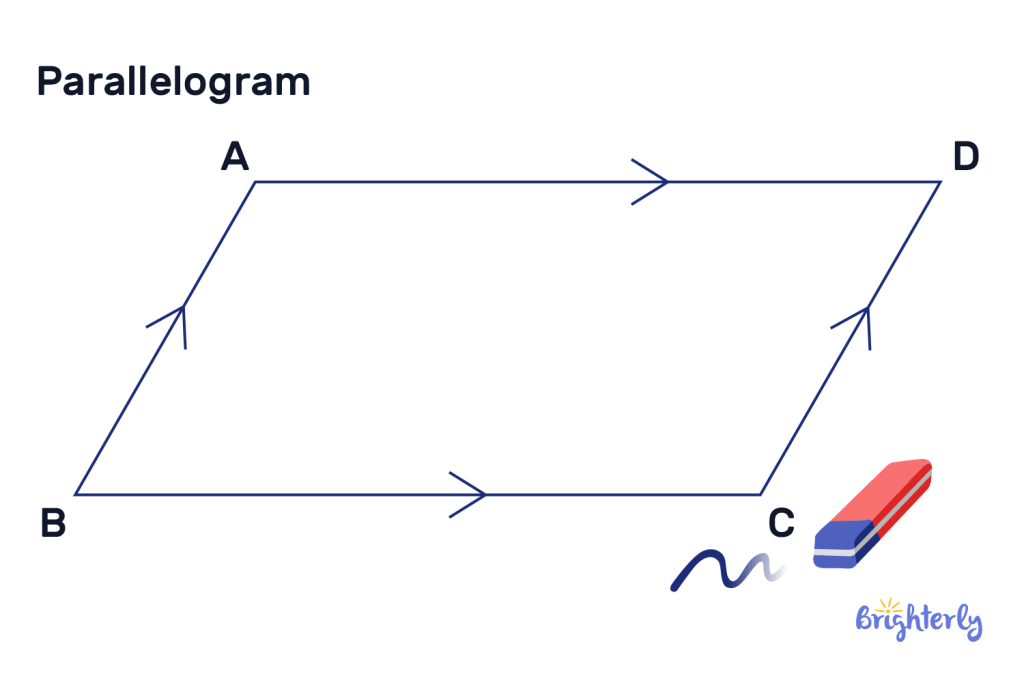
Parallelogram: examples
Below, we have included four examples of parallelogram shapes:
| ‘Classic’ parallelogram | 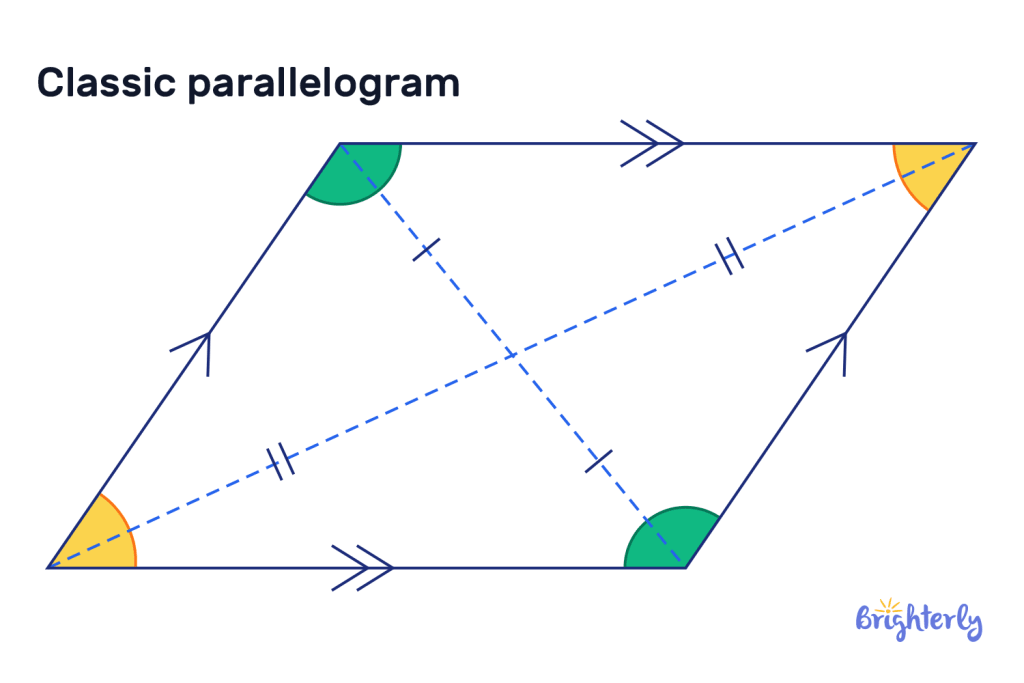 |
| Square | 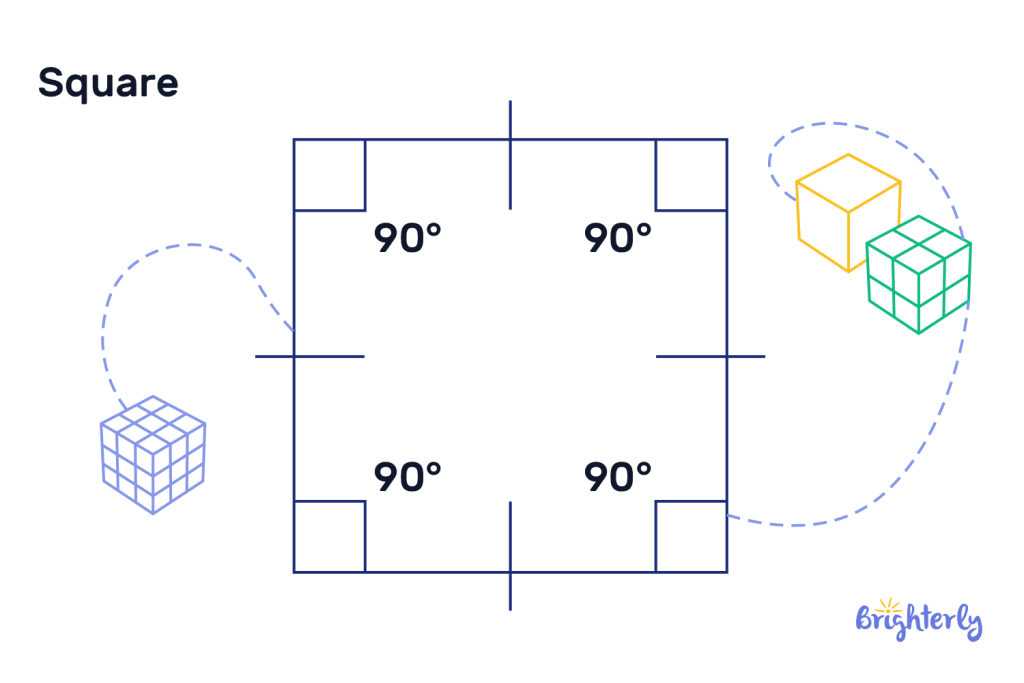 |
| Rectangle | 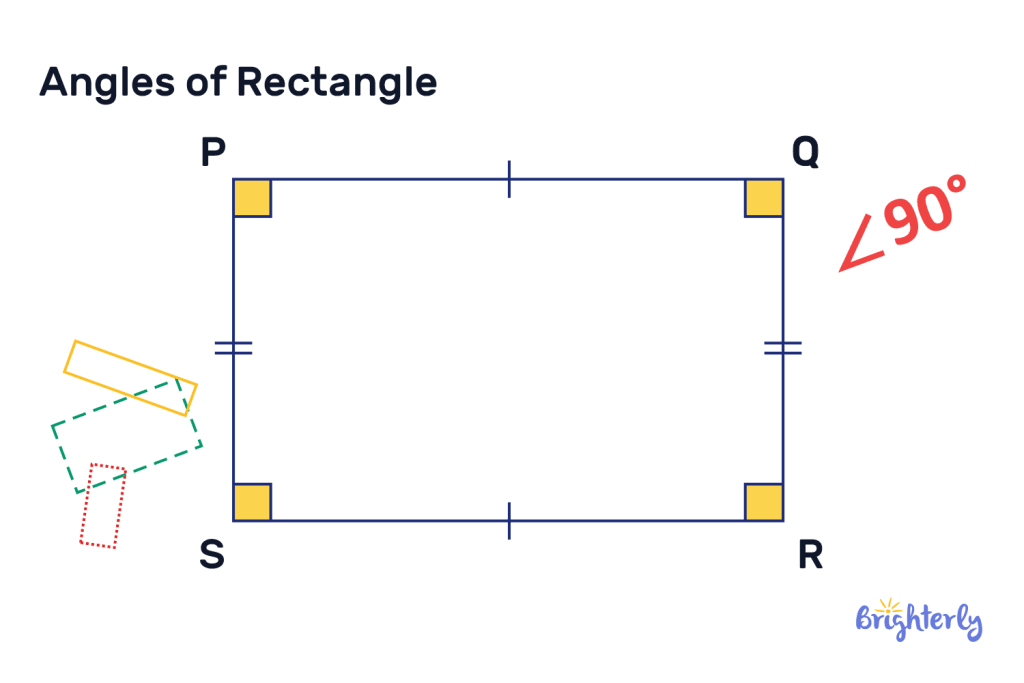 |
| Rhombus | 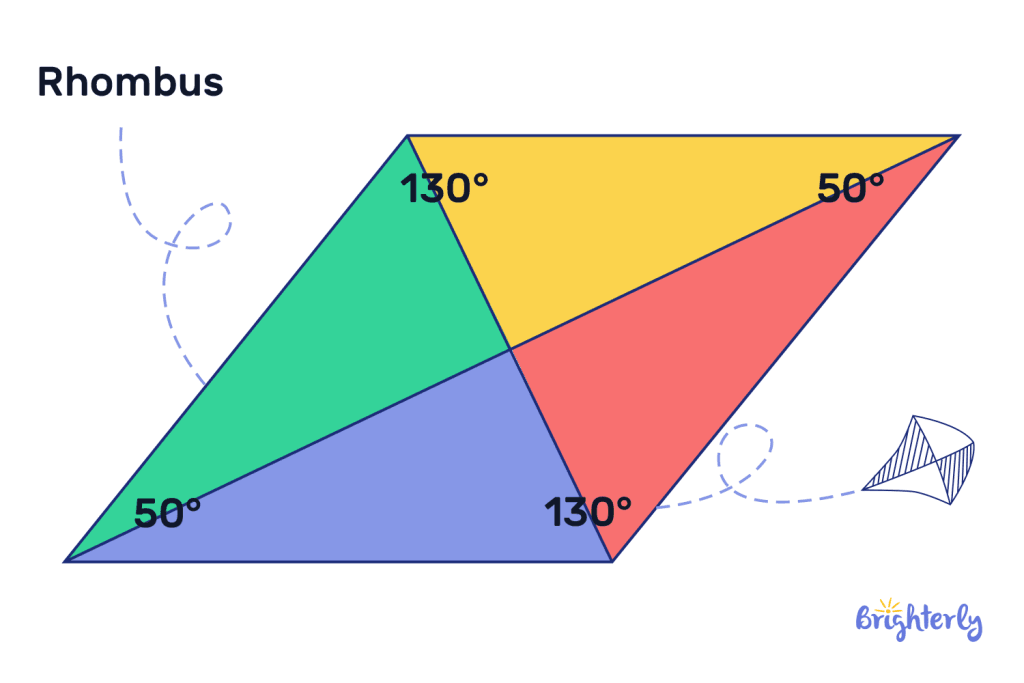 |
Properties of parallelograms
The unique properties of a parallelogram set them apart from other types of quadrilaterals. Their unique properties are:
- Both opposite pairs of sides are equal in length and parallel.
- Both opposite pairs of angles are equal.
- The angles next to one another (consecutive) are supplementary (their total is 180°).
- Its diagonals bisect one another.
Do all parallelograms have 4 equal sides?
No, not all parallelograms have 4 equal sides. Squares are an example of a parallelogram with 4 equal sides, but many rectangles don’t have four equal sides. Rhombuses and ‘classic’ parallelograms can have four equal sides, but they don’t need to in order to be parallelograms.
What characterizes a parallelogram is that both parallel pairs are of equal length but don’t need to be equal to the other parallel length.
What shapes are parallelograms?
Parallelograms are quadrilaterals, meaning they have four sides. Multiple different shapes are parallelograms.
Is a rectangle a parallelogram?
Yes, a rectangle is a parallelogram, because both of its opposite sides are always equal in length.
Types of parallelograms
There are multiple types of parallelograms that are all unique, including:
- Squares: a square is a parallelogram with all equal-length sides. Each angle in a square is 90°.
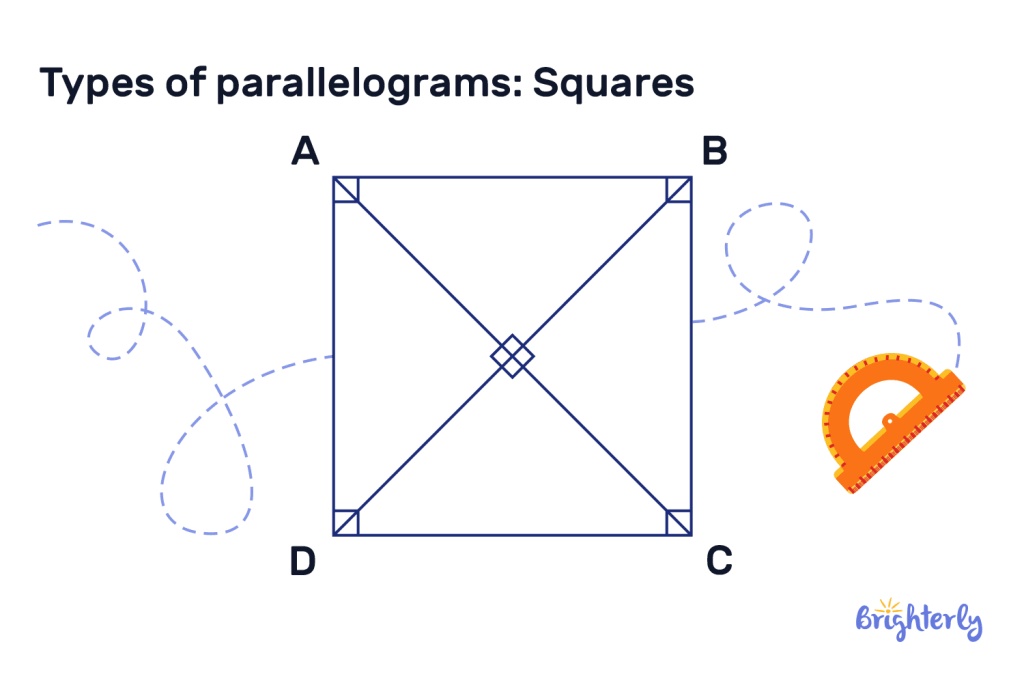
- Rectangles: a rectangle is a parallelogram where both opposite pairs of sides are the same length. Each angle in a rectangle is also 90°.
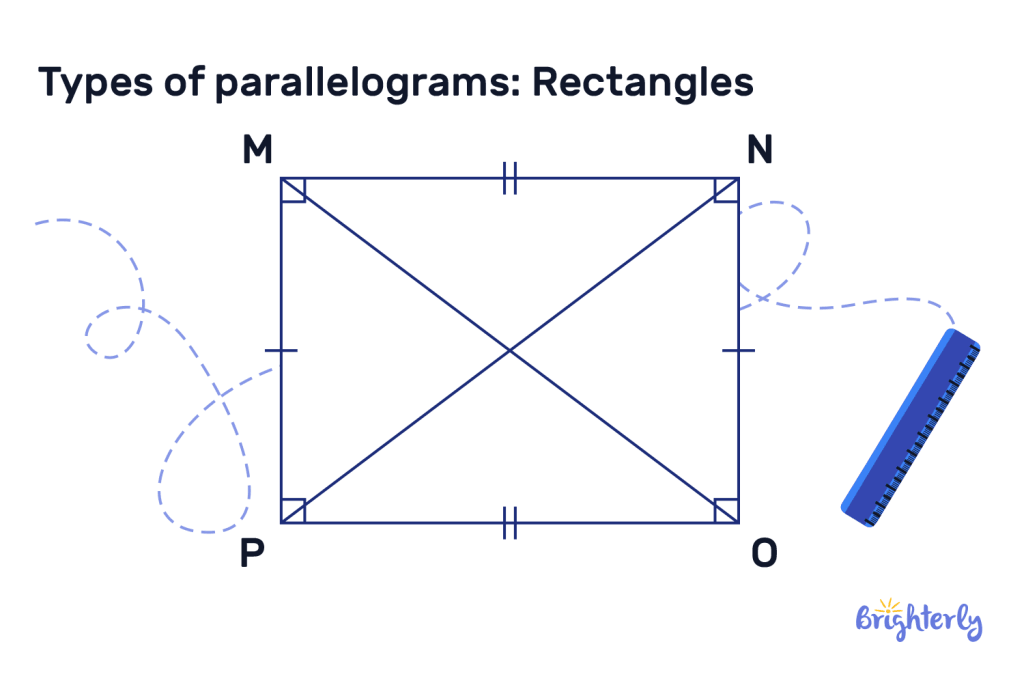
- Rhombuses: a rhombus is another parallelogram with all equal-length sides. However, each angle doesn’t need to be 90° – but adjacent angles always add up to 180°.
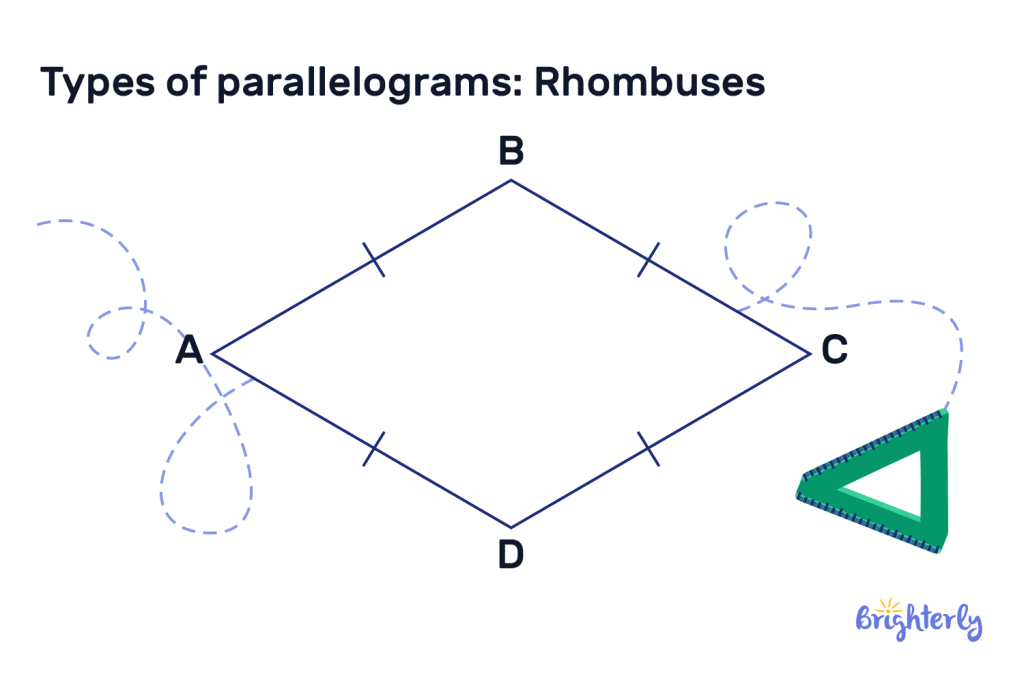
Area of a parallelogram
There’s an easy formula you can use to work out the area of any parallelogram shape:
Area = base x height
For example, if you have a square parallelogram with a base of 5cm and a height of 5cm, the area will be 5 x 5 = 25.
If you have a rectangular parallelogram with a base of 5cm and a height of 7cm, the area will be 5 x 7 = 35.
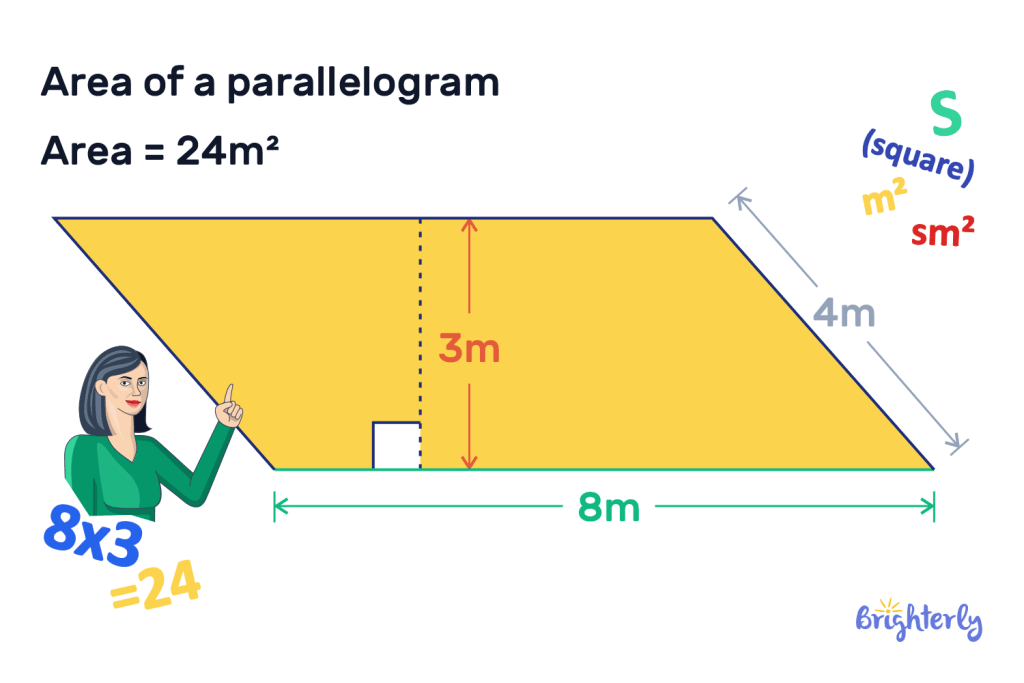
The perimeter of a parallelogram
Working out the perimeter of a parallelogram is also easy with this simple formula:
Perimeter = 2 x (side1 + side2)
For example, if you have a square parallelogram with side1 of 4cm and side2 of 4cm, the perimeter will be 2 x (4 + 4) = 16.
If you have a rectangular parallelogram with side1 of 4cm and side2 of 6cm, your perimeter will be 2 x (4 + 6) = 20.
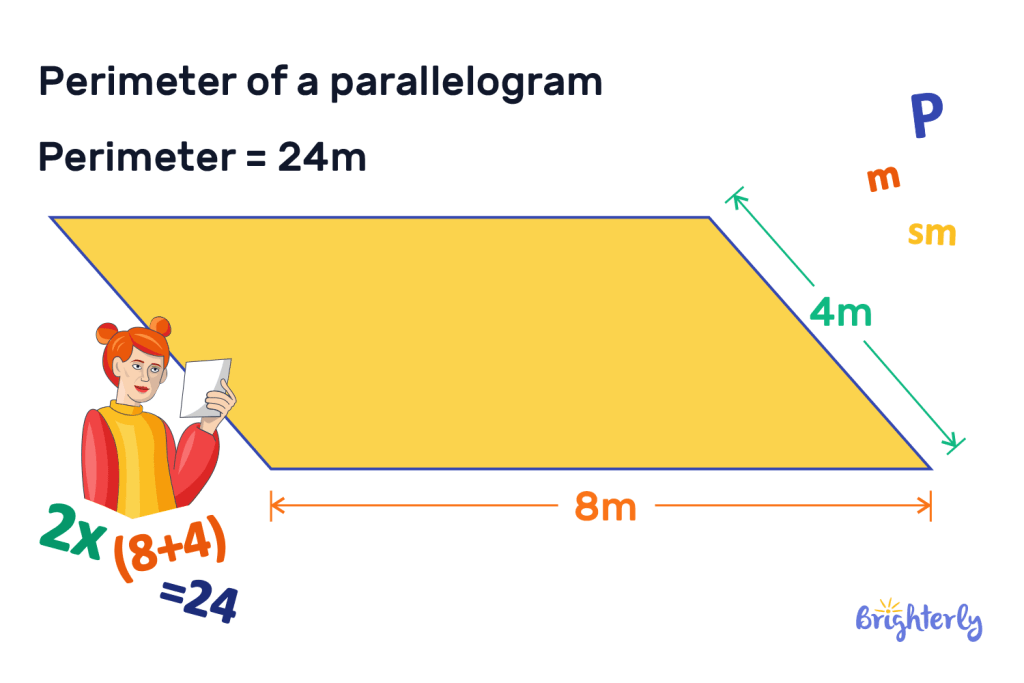
Solved math tasks: examples
Here, we have included some example math tasks with solutions to help your kid put their parallelogram learning into practice.
Solved math task 1:
Work out the remaining two angles of a parallelogram that has two consecutive angles of 75° and 105°.
Answer:
| The remaining angles are 75° and 105°. |
This is because opposite angles are equal, so the opposite angles will be the same as the two known angles.
Solved math task 2:
Which of the following shapes are parallelograms?
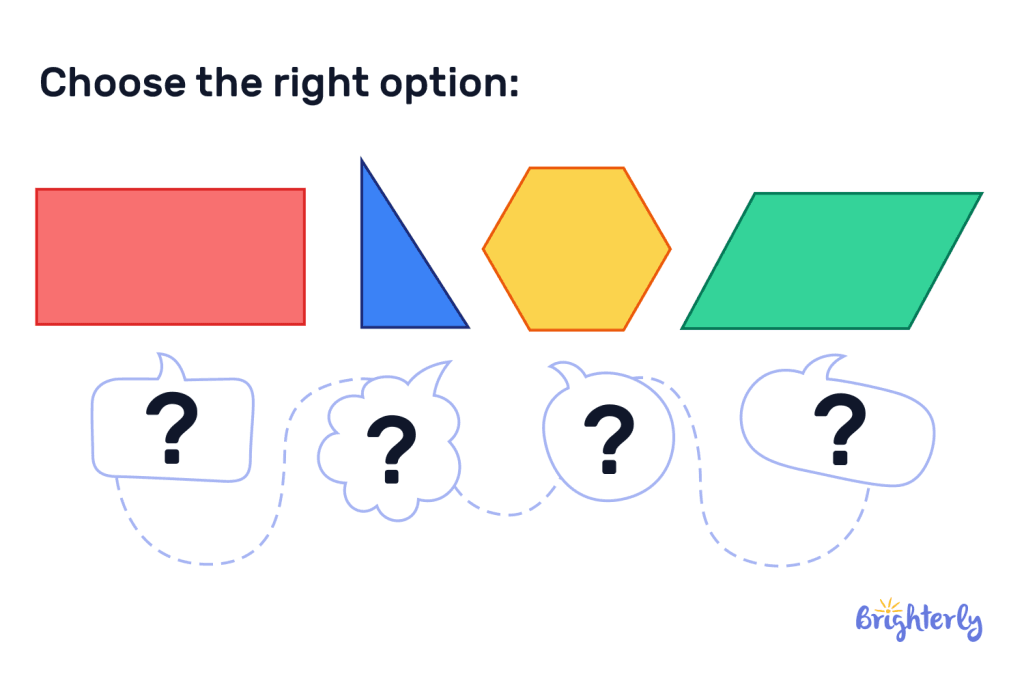
Answer:
| Shapes 2 and 4 are parallelograms because they have two pairs of opposite sides of the same length. |
Parallelogram: practice math problems
Parallelogram worksheets
Brighterly offers math worksheets focused on parallelogram shapes to help your kid learn and practice their knowledge:
- Quadrilateral worksheets
- Special parallelogram worksheets
- Properties of parallelograms worksheets
- Area of parallelograms worksheets
